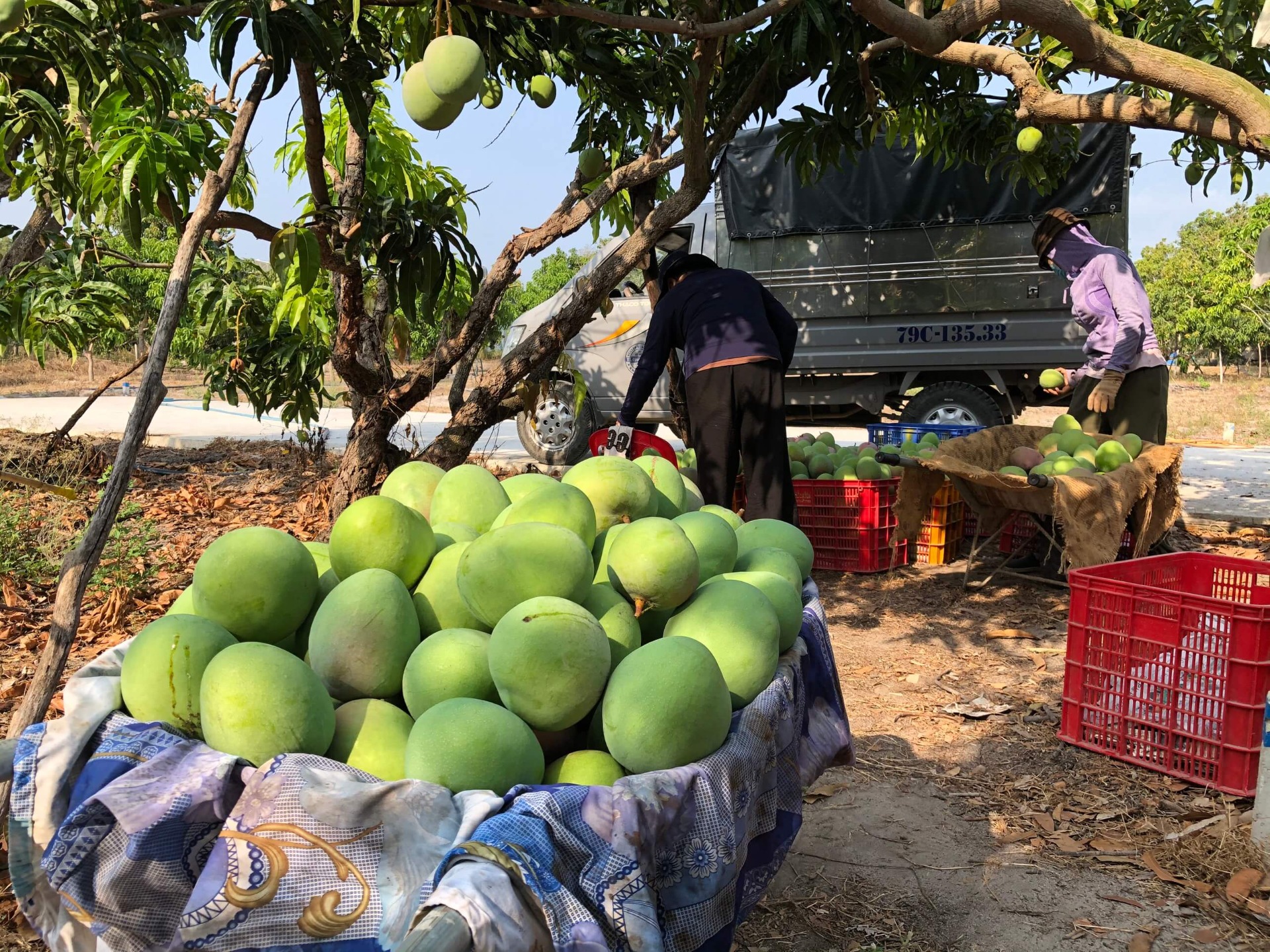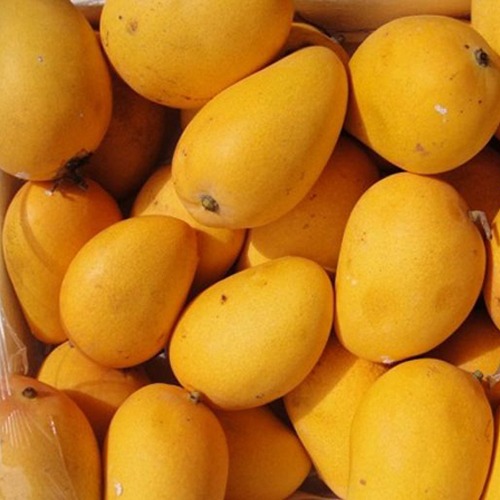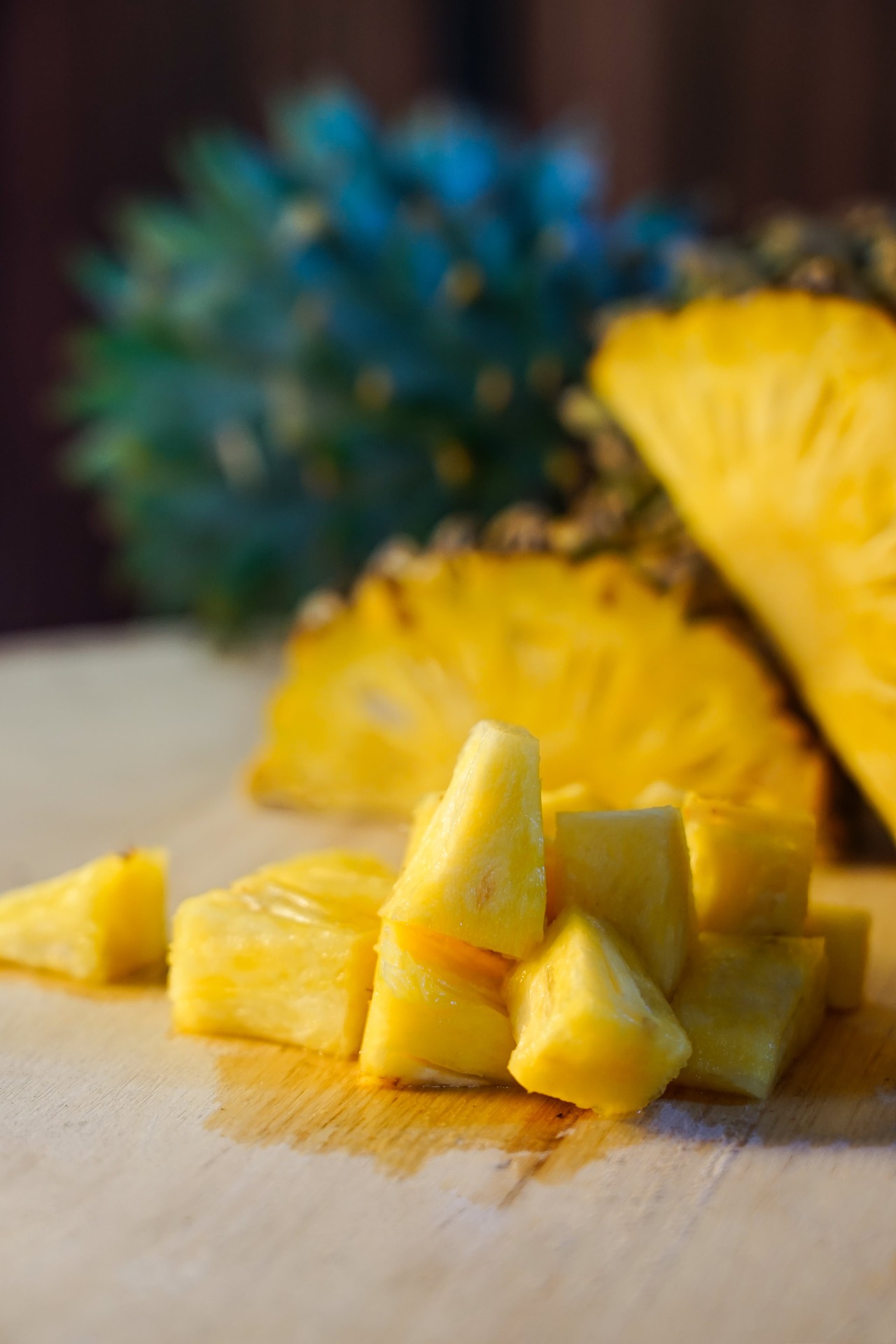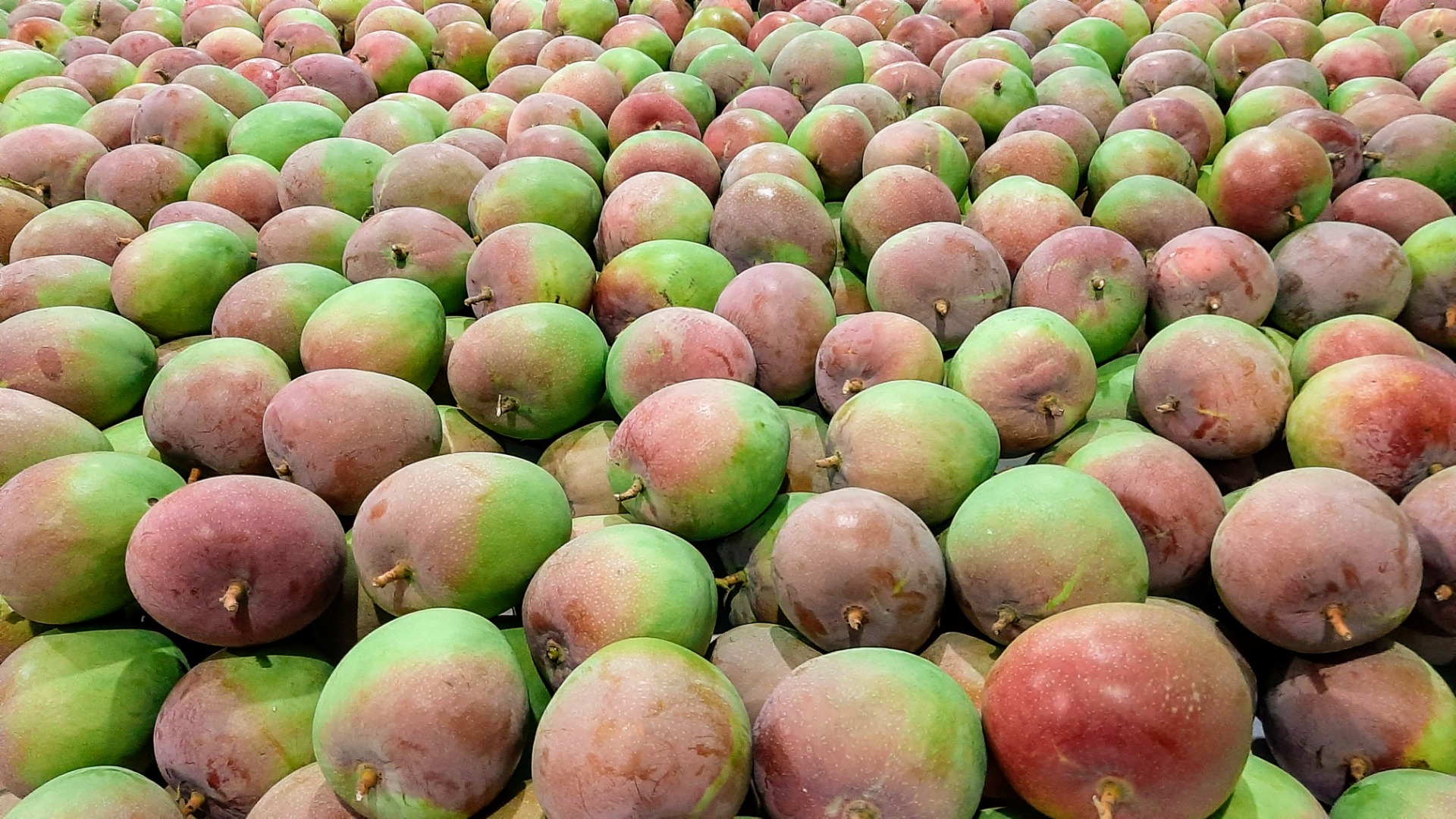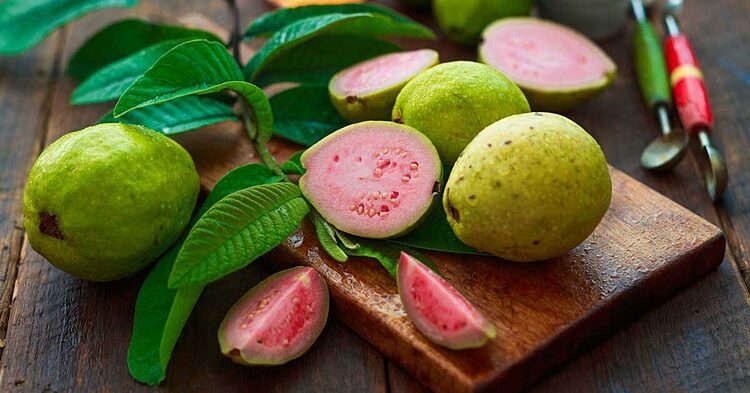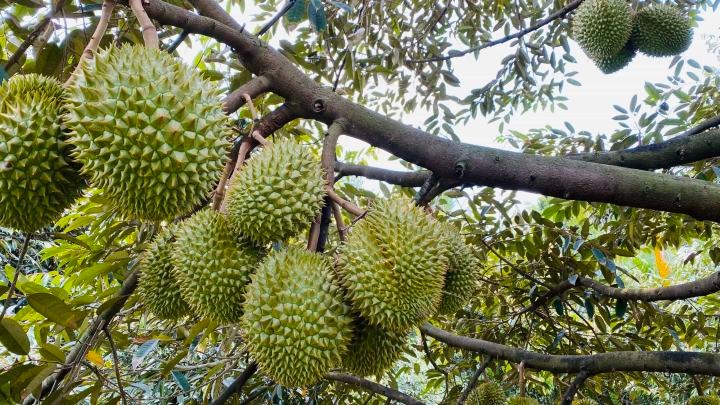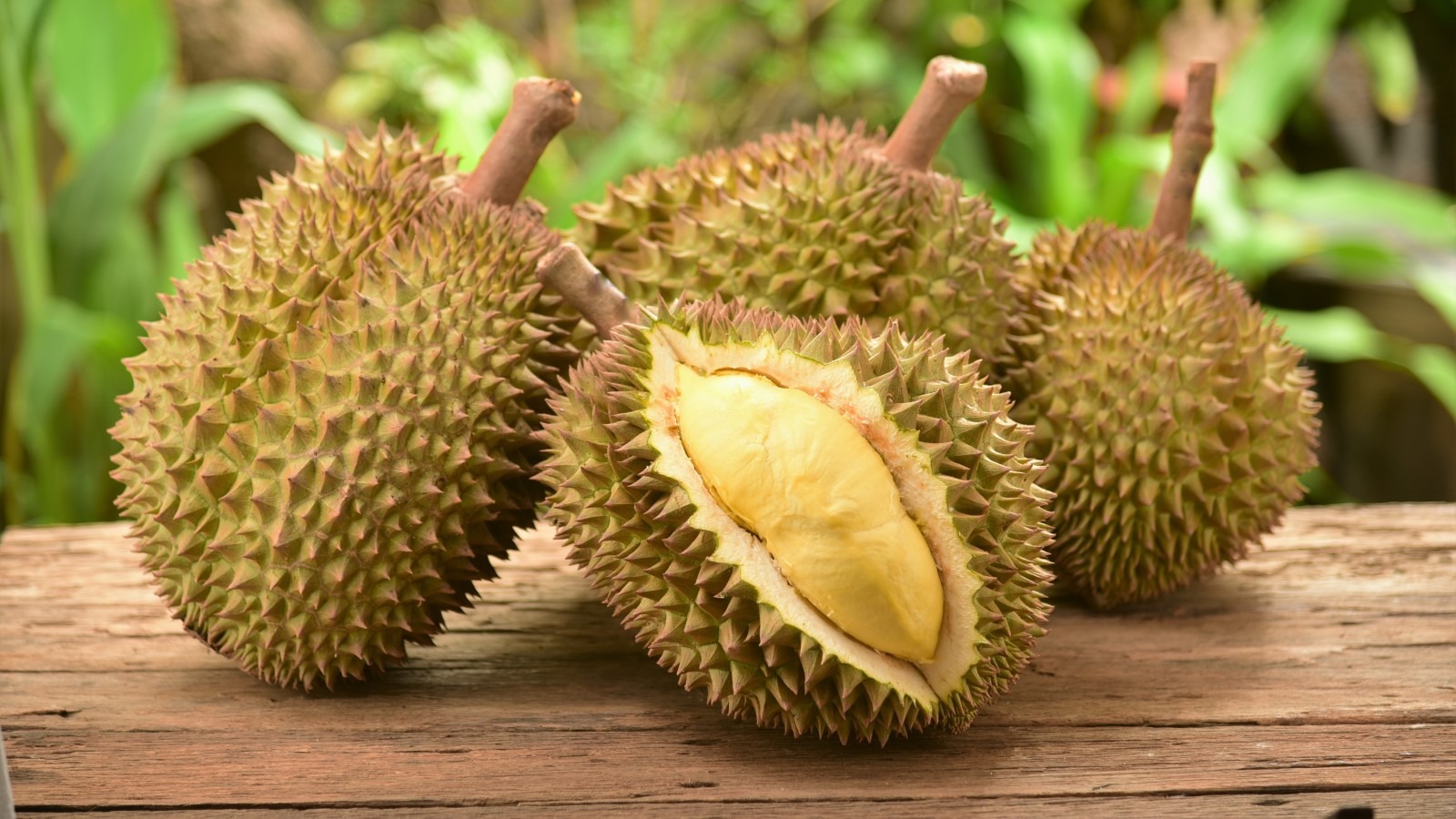MANGOES
MANGOES
Mango
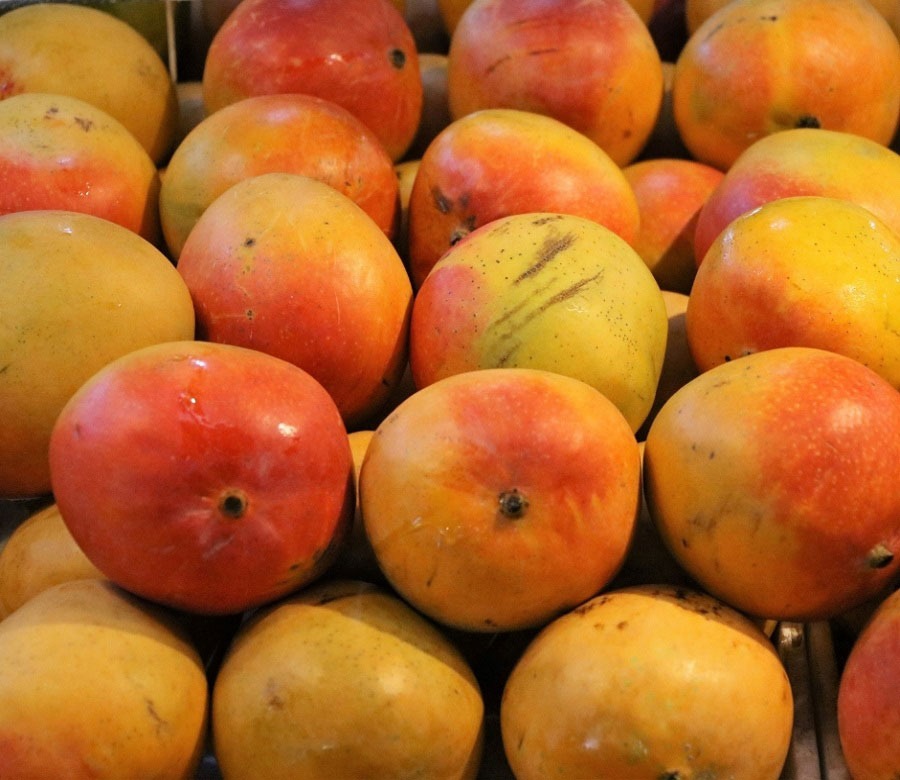
Thailand is the largest mango producer in Southeast Asia. Thailand produced 3,432,000 tonnes of mangos, followed by Indonesia (2,184,000 tonnes) Philippines (827 thousand tons), Việt Nam (725 thousand tons) in 2016. Cambodia is also a large producer of mangos in Southeast Asia, with an area of 65,000 hectares of mango in 2017.
Mangoes have traditionally been cultivated in the Central and Southern parts of Việt Nam. Mangoes are not commercially grown in the North, well-known areas are in Mai Sơn and Yên Châu districts in Sơn La province, Yên Minh is a rural district of Hà Giang Province, and Lai Châu province where the winter temperature is quite high and humidity is low (which is considered very favorable for pollination and fertilization of mangoes). However, mangoes are often grown as ornamental or shade trees in home gardens and pagodas in many inland provinces in the North. Main production areas in Việt Nam are Tiền Giang, Đồng Tháp, Cần Thơ, Vĩnh Long and Khánh Hòa in southern Việt Nam. To the east of Cochinchine, mangoes are grown in Đồng Nai, and Bà Rịa-Vũng Tàu province.
In 2017, Việt Nam has 92,746 hectares and an output of 788,233 tons of mango, of which the Mekong Delta was the largest mango producing area, accounting for 46.1% of the area and 64.4% of the mango production of the country; followed by the South East.
Weather conditions available in North of Việt Nam includes a rather low November and December temperatures, much sunshine, and little rain. These should create favorable conditions for mango flowering, but no commercial production is viable, because cold north-westerly winds, cloudy skies, and drizzling rain occur when the mango flowers in January and this causes poor fruit set, seedless small fruits, and a high incidence of diseases that prevent fruit set and development.
“Xoai” is a Vietnamese term for mango. The major and popular cultivars in the South are “Xoài Cát Hòa Lộc”, “Xoài Cát Chu”, “Xoài Tí Hon”, “Xoài Xiêm núm”, and “Xoài Bưởi”. In the North, three new cultivars have recently been released by the Research Institute for Fruits and Vegetables (RIFAV)- GL 1, GL 2, and GL 6 (GL is an abbreviation of Gia Lâm, a district of Hanoi where RIFAV is located).
Pests and diseases:
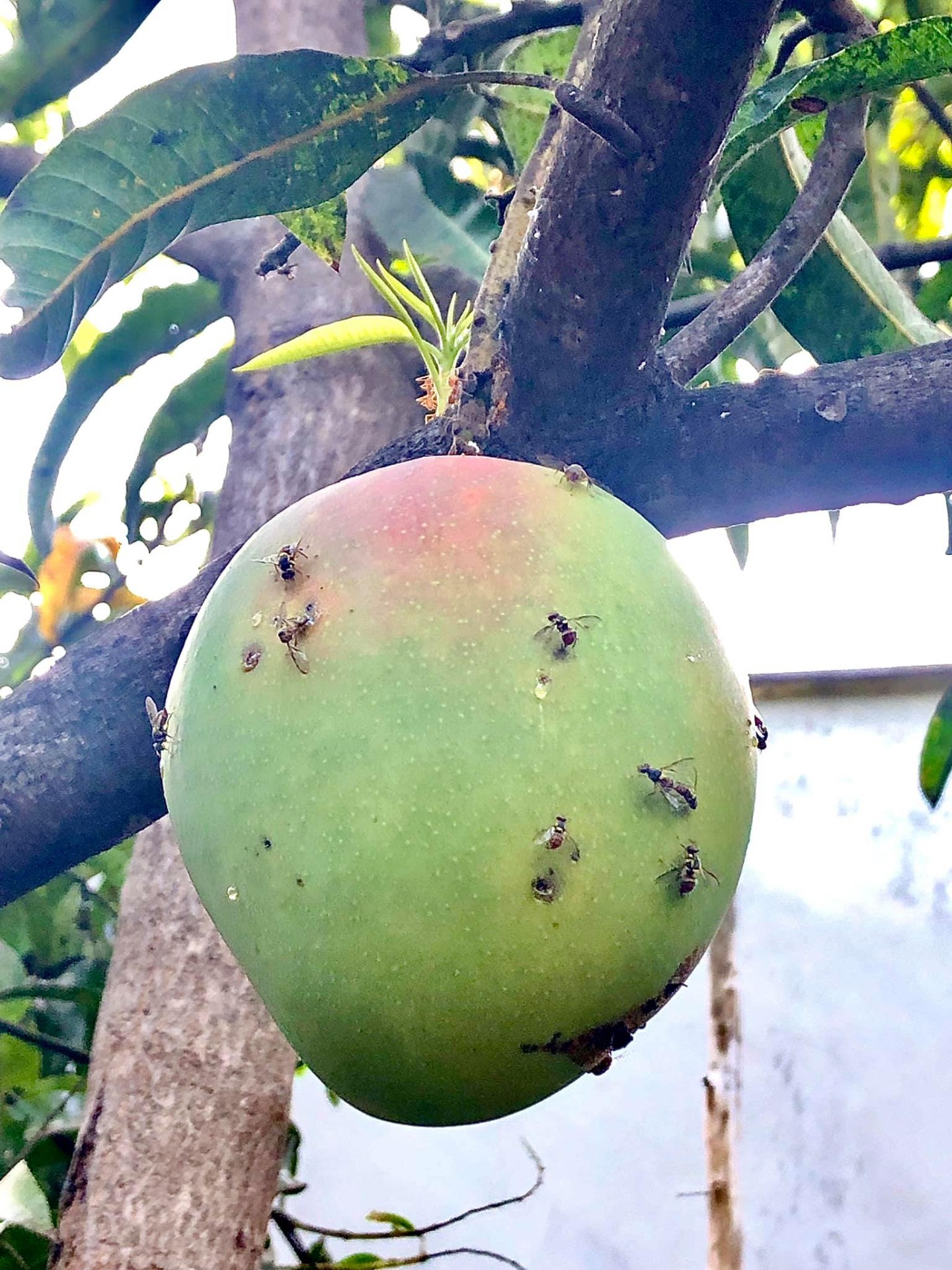
Among the most serious diseases are big eye bug that sucks sap from the young shoots and inflorescences; fruit fly which lay eggs in the fruit and the resulting worms eat the mango flesh; leaf-eating caterpillars stem borers and tip borers which may cause die-back of the whole branches.
Major diseases include anthracnose causing circular or sunken black marks on the leaf, flower, and young fruit, and stalk-end fruit rot.
Fruiting season:
In the South, fruits are harvested from February to May (peak period in March-April) while in the North fruiting season can last from May to September.
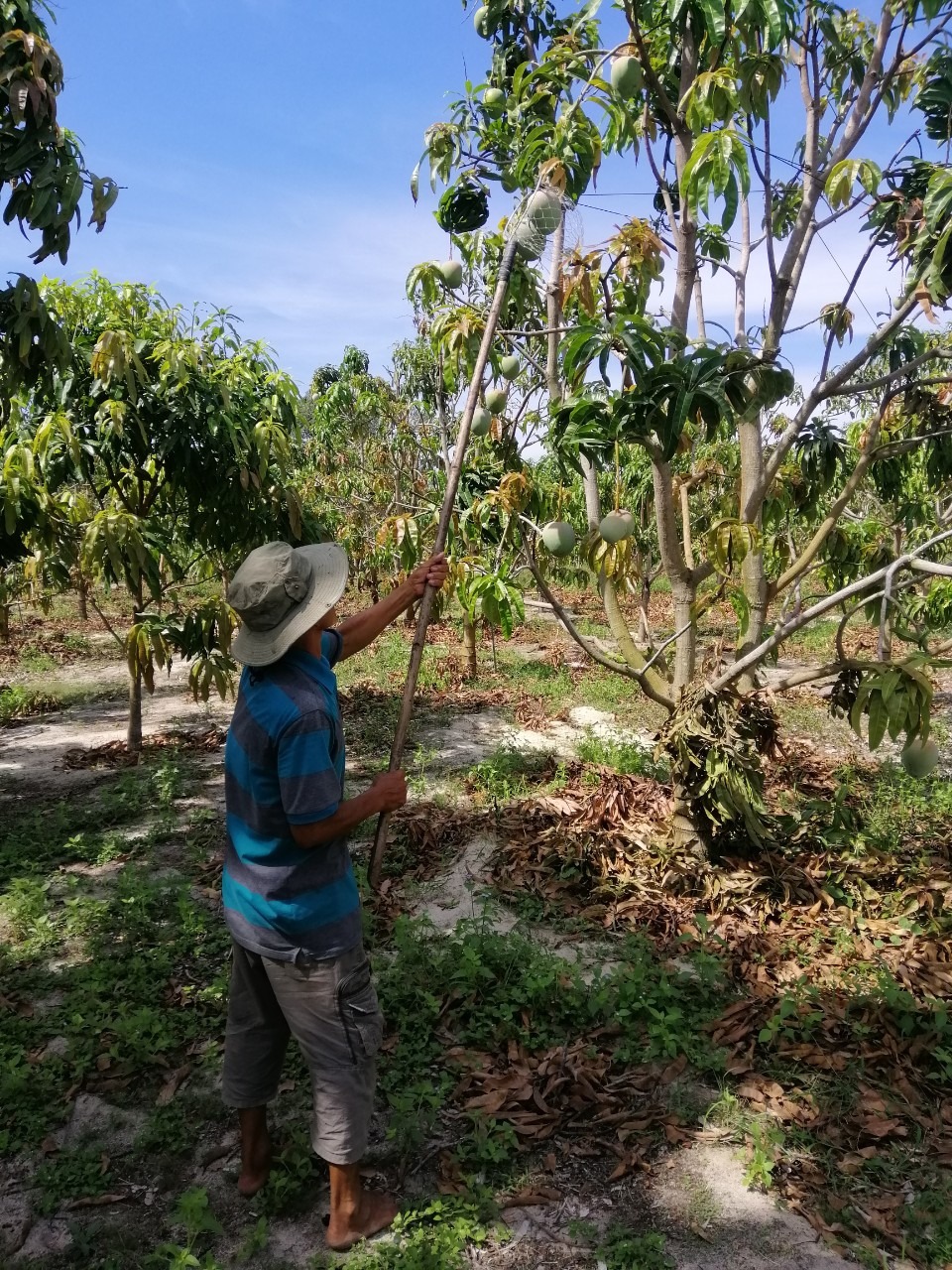
Harvesting and yield: The fruit is handpicked, either by climbing the tree or by using a picking device attached to a bamboo pole. Assessing maturity from the appearance of the fruit is difficult. One way is the length of time after flowering, which is 81 to 85 days in the South, the other is to observe the color. Fruits begin to turn from green to pale yellow and the fruits become more aromatic. However, experience allows growers to choose the right time for harvest.
Challenges:
Mango cultivation was primarily a small farmer’s activity. It is difficult for market signals relating to demand, varieties, quality, and food safety to be translated farmers, most sell to local collectors and wholesalers with few incentives to improve quality, limited awareness of market demand and quality requirements, poor technical skills, and difficulties in funding investment. Since mango cannot be grown commercially in the North, it has to be transported from the South, adding a high cost to the consumers.
The Vietnamese government has therefore been promoting what is called the “large field” program under which farmers are encouraged to organize together as cooperatives and groups and establish long term relationships with companies through contracts involving the supply of inputs, provision of extension advice by company agents, and purchase of farmers’ produce at agreed prices.
Pros of Eating Mangoes:
Eating plenty of mangoes helps unclog pores and makes your skin look fresh. It can act as a skin cleanser that helps to clear acne on your face if mango slices are placed on your face for 10-15 minutes or even make a body scrub from mango mixed with honey.
Mangoes are high in vitamin C, fibers, and pectin and they help in reducing cholesterol levels in the body. Fresh mango is rich in potassium which is required by body fluids and cells to regulate blood pressure and heart rate.
Taking mangoes which are rich in vitamins and nutrients can aid in digestion problems by breaking down the proteins.
Mangoes are rich in fiber, minerals, and vitamins which can easily boost the stomach digestion function thus contributing to the burning of excess calories in the body. This contributes to weight loss.
